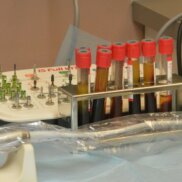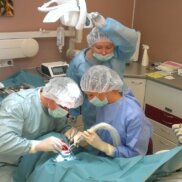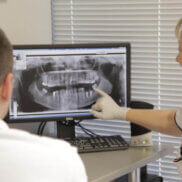If you are concerned about a missing tooth or teeth, you may consider placing implants in your jawbone. The roots of the missing teeth can be replaced and crowns placed over them. The dental implant placement procedure is carried out in a sterile environment under local anaesthesia and is relatively quick.
More often than not, the patient has a receded jawbone due to the missing tooth and it needs to be regrown during the surgery. We use an innovative A-PRF technology and synthetic bone granules as appropriate. During surgery it may be necessary to perform other surgical procedures as well. Read more about them here.
We use NeoBiotech (South Korea) and ICX (Germany) implants.
Here is an overview of the nature and placement of implants:
| What is a dental implant? A dental implant is usually a titanium screw that replaces the missing tooth root. The implant superstructure or abutment is attached to the body of the implant. The crown or bridge is in turn attached to the abutment. Implants are placed both in the upper and lower jaw where they fuse with the bone. Titanium is tissue-friendly and forms a tight bond with the bone. Titanium is biologically inert and does not cause allergies or a foreign body reaction. |
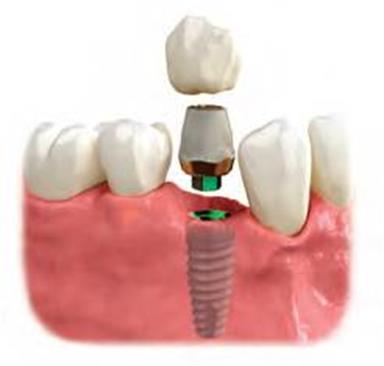 |
| When is a dental implant necessary?
A. If you have a missing tooth in the middle of other teeth, then you have the option of restoring it with a dental bridge or implant. In order to place the bridge, the adjacent teeth, which will support the bridge, need to be shaved down. |
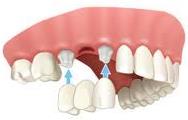 |
| A dental implant is the best solution. It is not necessary to shave down any teeth. Implants replicate the natural anatomy of the tooth root, ensuring that both the bone and gums are properly supported. The new tooth will look and function like a natural tooth. | 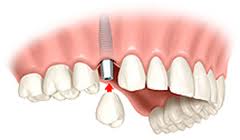 |
| B. If you are missing a back tooth or the adjacent tooth is unsuitable for support, removable partial dentures are used, which are attached with the help of metal clasps. These clasps, however, can damage the abutment teeth over time, which may lead to tooth loss. | 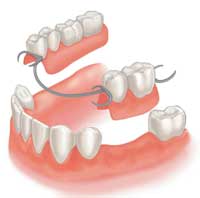 |
| Dental implants are the best solution. Titanium screws are artificial tooth roots that securely support new dental crowns or bridges while remaining invisible. Healthy teeth do not have to be shaved down, covered with crowns or attached to clasps. | 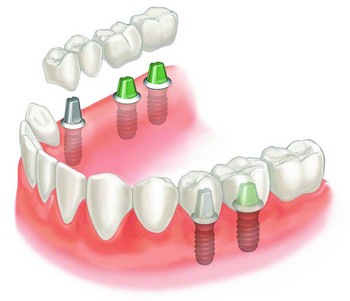 |
| C. If you have lost all upper or lower teeth, removable complete dentures are usually used, which are uncomfortable and tend to fall out. |  |
|
Do not worry. Implant-supported fixed or partial dentures will once again allow you to eat, talk and laugh with confidence in every situation without having to worry about the dentures becoming dislodged. |
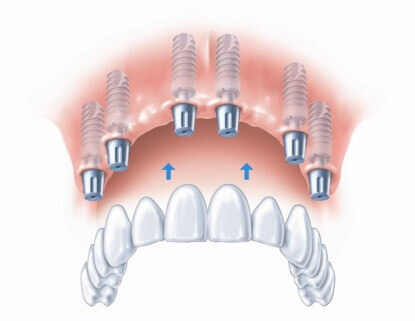 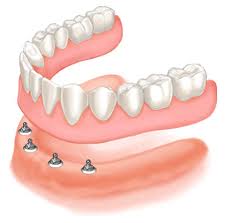 |
Dental implant requirements
|
|
Contraindications for dental implants
|
|
| Dental implant surgery
Under local anaesthesia, the dental implants are surgically placed in the jawbone. Two-stage implant surgery is as follows. An incision is made in the gums, a precision drill is used to place a pilot hole in the jawbone, which is then expanded gradually until the determined width and length are achieved. The implant is screwed into place. The gums are sutured shut and, in the case of the upper jaw, the healing period is about 3–6 months, and in the case of the lower jaw, the healing period is 2–3 months. The sutures are removed within 12–14 days. After the healing period, an incision is made to expose the implant, a healing cap is placed on top, and the crown is created. Depending on the situation and bone quality, a healing cap or a temporary crown made with CAD/CAM technology may be placed on the implant immediately. After the healing period, once the implant has fused with the jawbone, a permanent ceramic crown is placed on the implant. Read more about it in the section “After implantation”. |
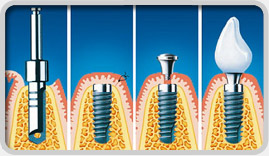 |
| Implant maintenance
There is a high risk of infection after the surgery, which is why it is important to practise good oral hygiene – cleaning your teeth thoroughly and using antiseptic mouthwashes. It is recommended to have regular dental check-ups every 3–6 months. To clean the implants, a special soft woven dental floss and interdental brush should be used. Implant failure is often the result of poor oral hygiene Check out our popular Smile package “Implant SPA”. |
|
